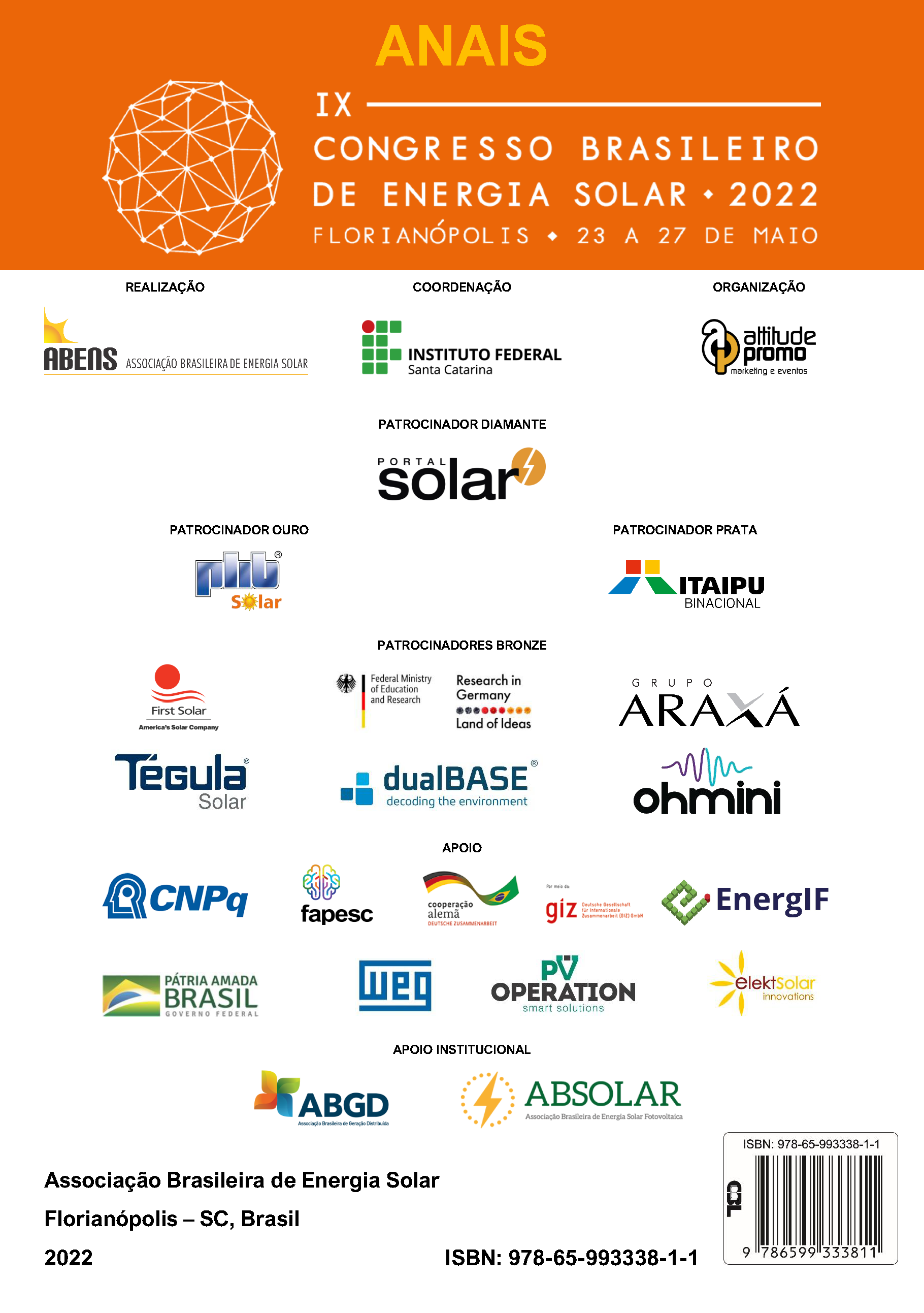APPLICATION OF SIMPLE STATISTICAL METHODS FOR THE COMPARISON OF INCIDENT SOLAR IRRADIATION BETWEEN THE CITIES OF NATAL/RN AND APODI/RN DURING THE AUSTRAL SUMMER
DOI:
https://doi.org/10.59627/cbens.2022.1234Keywords:
solar radiation, GHI, photovoltaic energyAbstract
Given the small annual variation of solar irradiance in certain places in the Brazilian Northeast, and given the importance of this meteorological variable for human development sectors, such as the photovoltaic energy industry, this work to compare solar radiation data from Natal/RN stations (5.837°S; 35.208°W) and Apodi/RN (5.63°S; 37.81°W) during the austral summer of the years between 2010 and 2020, to present possible potentials for solar power generation. Simple statistical methods were applied to both series, such as dispersive measures, and others. The presence of several outliers was observed in both series. As a result, insignificant differences were obtained between the values from Natal and Apodi, so that the maximum values corresponded to 7860 Wh/m2 and 7903 Wh/m2, respectively. The medians were equivalent to 6886 Wh/m2 for Natal and 6708 Wh/m2 for Apodi. Since the difference in maximum values, medians, means, standard deviation, variances and coefficients of variance betweens the two series were equal to 1%, 3%, 3%, 6%, 11% and 12%, respectively, it is concluded that the incidences of solar radiation for the locations were statistically similar during the austral summer. Thus, Apodi was introduced as a potential for the generation of solar energy when compared to Natal.
Downloads
References
ALVARES, Clayton Alcarde et al. Köppen’s climate classification map for Brazil. Meteorologische Zeitschrift, v. 22, n. 6, p. 711-728, 2013.
Área territorial brasileira 2020. Rio de Janeiro: IBGE, 2021.
BURGER, B.; RÜTHER, R., 2006. Inverter sizing of grid-connected photovoltaic systems in the light of local solar resource distribution characteristics and temperature, Solar Energy, vol. 80, pp. 32-45.
Cavalcanti, I. F. A., Ferreira, N. J., Silva, M. G. A. J., Dias, M. A. F., 2009. Tempo e clima no Brasil. São Paulo: Oficina de Textos, cap. 13, p. 197-212.
Gurgel, J. T. A., Frederico Pimentel Gomes, and A. P. Trivelin. “Determinação da epen aritmética e desvio padrão de quocientes de epend ependents s e ependents.” Anais da Escola Superior de Agricultura Luiz de Queiroz 14 (1958): 31-42.
IBGE, Diretoria de Pesquisas, Coordenação de População e Indicadores Sociais, Estimativas da população residente com data de referência 1o de julho de 2020.
INSTITUTO NACIONAL DE METEOROLOGIA (INMET). Banco de dados meteorológicos para ensino e pesquisa. 2021.
Kousky, V. E., 1979. Frontal influences on Northeast Brazil. Montly Weather Review, v. 107, p. 1140-1153.
Molion, L. C. B, Bernardo, S. O., 2002. Uma revisão da dinâmica das chuvas no Nordeste brasileiro. Revista Brasileira de Meteorologia, v. 17, n. 1, p. 1-10.
Morettin, P. A., BUSSAB, W. O, 2017. Estatística básica. Editora Saraiva.
PACHECO et al. Aprendendo R. Escola Nacional de Saúde Público: Fiocruz, 2017.
Santos, Hugo Francisco Lisboa, et al. "QUE FONTE DE DADOS METEOROLÓGICOS UTILIZAR NO BRASIL? QUE INCERTEZA ESPERAR? UMA COMPARAÇÃO ENTRE DIFERENTES ABORDAGENS E VARIADAS FONTES DE DADOS." VII Congresso Brasileiro de Energia Solar-CBENS 2018 . 2020.
SODA - Solar Radiation Data. Disponível em: <http://www.soda-pro.com/home > Acesso em: 10 Dez 2021.


